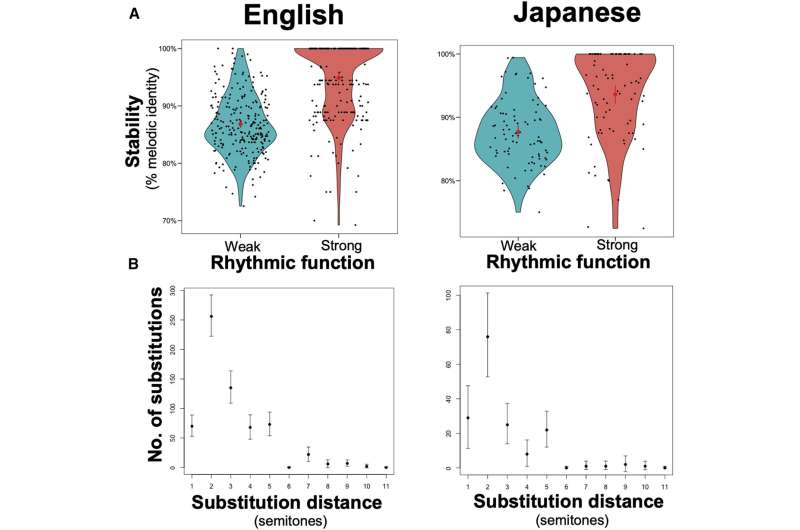In a Landslide Victory, Mexican GM Workers Vote In an Independent Union

Dan DiMaggio is assistant editor of Labor Notes.dan@labornotes.org

luis@labornot
MEXICAN AUTO WORKERS JUST MADE HISTORY BY TAKING BACK THEIR UNION
After years of struggle, thousands of auto workers at the massive General Motors plant in Silao, Mexico, just voted overwhelmingly for a more independent and democratic union.
BY MAXIMILLIAN ALVAREZ


Mexican auto workers in Silao, Guanajuato, just scored a huge victory that has been years in the making. After first ridding themselves of a corrupt, business-friendly union last year, 6,500 workers at the massive General Motors plant in Silao voted this week on which union would represent them moving forward. On Thursday, Feb. 3, news broke that workers overwhelmingly voted to join the Independent National Auto Workers Union (Sindicato independiente nacional de trabajadores y trabajadoras de la industria automotriz), securing a major victory for rank and filers who have been fighting for a more independent and more democratic union.
In this interview, recorded before the union election took place, TRNN Editor-in-Chief Maximillian Alvarez speaks with auto worker and labor organizer Israel Cervantes about this pivotal struggle and what the union election means for workers and the labor movement in Mexico and beyond. Israel Cervantes was one of the first workers at the Silao plant to begin organizing against both the corrupt union and the company. After working at the plant for 13 years, Cervantes was fired for organizing a demonstration of solidarity with striking GM workers in the US in 2019. He is now the leader of a new organization called Generando Movimiento (Generating Movement).
Pre-Production/Studio/Post-Production: Cameron Granadino
Spanish-to-English translations provided by Bruce Hobson, coeditor and translator for the México Solidarity Project
Detroit Free Press

It may be too soon to know whether car buyers will see a boost in prices for full-size pickups after workers at a General Motors plant in Mexico voted to form the first independent labor union earlier this week but U.S. autoworkers are cheering the move, saying it makes them more competitive with that nation's workforce.
The union, called the National Independent Union of Workers of the Automotive Industry (SINTTIA), won the vote by a wide margin to represent about 6,500 workers in upcoming labor negotiations at GM's Silao Assembly plant, located about 200 miles north of Mexico City. Both wages and benefits are expected to increase under the union.
GM builds the highly profitable Chevrolet Silverado and GMC Sierra light-duty full-size pickups at Silao. In the current plant contract, it said the wages range from 184.35 pesos to a maximum of 679.53 pesos per day. In dollars, that's about $8.97 to $33.05 per day. In contrast, GM builds the same light-duty pickups at Fort Wayne Assembly in Indiana and will start building the light-duty Silverado at Oshawa Assembly in Ontario soon. GM builds its heavy-duty pickups at Flint Assembly and Oshawa. At those plants, wages range from $18 to $32 an hour.
The 2022 Chevy Silverado starts at $31,500 and climbs to more than $65,000 depending on the model; the GMC Sierra starts at $30,800 and increases to more than $78,000, according to Kelley Blue Book.
An article in the New York Times reports the pay for starting workers at GM's Silao plant is lower than the pay "at some Nissan, Audi and Volkswagen plants in Mexico that are represented by independent unions, and just 60 cents above the country’s daily minimum wage."
UAW members view higher wages in Mexico as good news for both the workers in Mexico and stateside. It brings production costs on par with U.S. factories, potentially giving U.S. workers an edge at winning future products to build.
“Their wages go up, that helps us,” said Eric Welter, UAW Local 598 shop chairman at Flint Assembly. “I don’t know what initial benefit there’ll be, but it makes us more competitive and helps us not to have to make future sacrifices. We’re on a more level playing field in the future.”
'Bleed-off to Mexico'
Welter said the initial benefits will be seen in the U.S. parts and supplier industry.
There, the average wage is about $12 an hour, closer to the wages paid in Mexico, Welter said. He speculates that might prompt suppliers to build more parts in the U.S. rather than in Mexico, then pay to ship them to the states.
“Everyone is trying to get wages up down there, so that it’s not a bleed-off to Mexico,” Welter said

GM has made considerable investments in its U.S. operations in recent years. Last month, GM said it will invest $7 billion in four manufacturing sites in Michigan after local and state governments granted it big tax incentives. The investment will include constructing a new battery cell plant in Lansing and expanding its Orion Assembly plant in Orion Township to build the 2024 Silverado EV pickup, along with Factory ZERO in Detroit and Hamtramck.
But other truck plants such as Flint Assembly, Fort Wayne Assembly and Arlington Assembly in Texas have yet to be allocated future electric vehicles, a big concern for other UAW-represented workers.
UAW Local 2209 Shop Chairman Rich LeTourneau at Fort Wayne Assembly did not immediately respond with a comment.
More:GM's huge Michigan investment left out Flint Assembly, leaving workers anxious for future
In a UAW statement issued Thursday, the union said it congratulates the workers of GM Silao on "forming a free, fair and independent SINTTIA union. We commend the Biden Administration and (the office of the United States Trade Representative) for ensuring a fair election process and we look forward to a new era of free, fair, independent unions in Mexico.”
GM's reaction
But what will that all mean for truck prices?
GM spokesman David Barnas declined to comment on how potential wage and benefit gains for workers at Silao might impact GM's U.S. production plans or pricing of future vehicles, noting, "they haven’t even started the collective bargaining process with the newly elected union at Silao yet."
Barnas said the results will be finalized in the following days and GM will act in compliance with the law "to work with the union representatives elected by the workers, SINTTIA, to negotiate a Collective Bargaining Agreement for the manufacturing complex in Silao."

General Motors de Mexico confirms that the compensation benefits in the current collective bargaining agreement remain in place until a new one is negotiated. Barnas said GM is committed to Mexico and its employees.
More:GM CEO Barra earns $23.6 million in 2020, topping 2019 compensation
GM has operated in Mexico for 86 years. Historically, the agreements covering GM Silao provide a total package of salary and benefits that is higher than what the law requires and is competitive with the industry in Silao.
Barnas declined to comment on the current daily wage, citing the recent union voting process and subsequent collective bargaining.
But GM Silao has some of the highest "workplace of choice employee engagement scores" among GM's North America operations and the turnover rate of hourly employees is low, Barnas said.
"Our Silao employees choose GM and elect to remain with the company for extended careers because of the positive and healthy environment that we have established as a corporate leader in Mexico," Barnas said.
An act of courage
The win by the independent union came despite fierce headwinds.
The union was one of four that workers were choosing from, but it represented the only true break from the previous system, said Harley Shaiken, professor emeritus at the University of California, Berkeley, who is an expert on labor issues in Mexico.
Workers had already been represented by a union, but that former union, the Confederation of Mexican Workers, or CTM, was skilled at derailing reform and would fight hard to maintain the status quo, Shaiken said.
The UAW and the AFL-CIO had called on GM and the Mexican government to protect workers’ rights and make sure the vote was carried out fairly and free of intimidation.
"For Mexican workers, this vote took a lot of courage in an entrenched campaign against a powerful opponent," Shaiken said
Unions at Mexican auto plants have long been accused of corruption at the expense of workers, developing protection contracts that benefit the companies and keep wages low.
The path to the current vote was connected to Mexican labor reforms that allowed workers to weigh in on their collective bargaining agreements.
Shaiken said the vote results are a bellwether for how well the United States-Mexico-Canada Agreement (USMCA), which replaced the North American Free Trade Agreement, would address labor concerns.
More:UAW, AFL-CIO push GM, Mexican government to safeguard workers ahead of union vote
Besides low wages, workers in Mexico have complained of 12-hour days and work safety issues, said Marick Masters, a business professor at Wayne State University.
The vote to approve an independent union is a "real chance to see a new light," Masters said.
"There’s a lot of distance between recognition and a contract," Masters said. "But this is certainly a step toward an independent labor movement and if that gains momentum, it’ll mean better wages and working conditions. That would level the playing field and perhaps favor U.S. workers."

But even if the new union in Mexico can negotiate higher wages and better benefits, the levels won't rise to the rate of union-represented workers in the U.S. and Canada for a long time, Masters and Shaiken said. Unifor is the union that represents autoworkers in Canada.
But it will provide a better life and improved work conditions for workers in Mexico and benefit GM, Shaiken said.
"Even if wages triple in Silao, which is not going to happen overnight, it still only means they would be at 30% of what the wages are in Fort Wayne," Shaiken said. "These pickups are a license to print money for GM. GM made $10 billion in North America last year. Higher wages mean this could be a more productive plant, with lower absenteeism and result in higher quality.”
More:GM's UAW workforce profit-sharing check will top $10,000
Given that the majority of the pickups GM builds at Silao Assembly are imported to the U.S., raising wages in Mexico could help Flint or Fort Wayne get future product, he said.
"(Lower wage rate) is why GM has an attraction to locate in Mexico," Shaiken said. "This isn’t a small vehicle where the margins are tight, these are one of the most profitable vehicles and the wage scale isn’t just low, they are suppressed, because the workers haven't had a good union."
Price hike 'inevitable'
While Shaiken does not see any potential improved wages or benefits in Mexico forcing GM to raise prices on its full-size pickups, Masters said consumers may feel it in the pocketbook.
Labor costs are a relatively small cost of operations, but anything at the margin is impactful, Masters said.
There are other issues that could raise production costs too, such as GM's move toward an all-electric lineup by 2035. GM has said it will invest $35 billion over the next three years to develop EVs and self-driving cars. But on Tuesday, CEO Mary Barra said GM now plans to increase that investment, but she did not provide a new figure yet.
Also, inflation is growing, boosting prices on most goods, Masters said. All of those things combining will put pressure on prices, he said.
"I think that’s inevitable. There’ll be higher costs of production associated with wage increases and improved working conditions in Mexico," Masters said. "You see the same thing in the U.S. right now with workers demanding higher wages and disengaging from the workforce because they’re dissatisfied and that puts pressure on employers to raise wages."
More: GM to hire 8,000 people this year as it expands into electric vehicles
More: GM issues firm warning to dealers tempted to overcharge on hot new vehicles
Major step to level playing field will likely shake up manufacturing landscape

KOSUKE SHIMIZU and KEN MORIYASU,
MEXICO CITY/NEW YORK -- Workers at a General Motors factory in central Mexico have voted to tap an independent labor union to represent them, replacing a long-serving union seen as too cozy with management.
U.S. Trade Representative Katherine Tai hailed the move as "a victory for workers" and touted the protections afforded by the United States-Mexico-Canada Agreement signed during the Trump administration. The USMCA, which replaced the North American Free Trade Agreement, sought to level the playing field between American and Mexican workers by improving the collective bargaining capabilities of unions.
The new union is expected to bargain hard over rights and wages at GM's plant in Silao -- a trend that could spread to other automakers in the country. Ford Motor, Stellantis, Nissan Motor, Mazda Motor, Honda Motor, Toyota Motor, Volkswagen, Audi and BMW all have Mexican production facilities.
Global automakers have benefited from Mexico's low wages and strategic geography. The central Mexican plateau lies roughly 1,700 meters above sea level and offers a natural downhill glide to the plains of the American South. Nissan in Aguascalientes, for instance, loads hundreds of cars onto a cargo train each evening -- when the railway is least congested -- to deliver to dealerships throughout the U.S.
On Thursday, the National Independent Union for Workers in the Automotive Industry (SINTTIA) beat out three other unions in the vote, including the Confederation of Mexican Workers, which had held the contract since 1995.
SINTTIA, created by the workers at the Silao plant last year, will now represent the facility's 6,000-plus employees.
The USMCA called for a significantly higher minimum wage for the auto industry, requiring that 40% to 45% of the content of automobiles manufactured in North America must be made by workers paid at least $16 per hour.

Mexico's amended labor law of 2019 mandated companies and unions to revisit existing labor contracts and authorize a collective bargaining agreement by May 2023. A majority of workers are required to support the CBA.
When the Silao plant held a vote on the CBA in April 2021, Mexico's Secretariat of Labor and Social Welfare ordered GM to hold another one after suspicions of fraud were raised over vote-counting.
The USTR also invoked the USMCA's "rapid response" mechanism for the first time the following month over the same suspicions.
In an August revote, a majority of workers rejected the CBA.
On Thursday, GM praised the vote as an "unprecedented democratic exercise" and vowed to cooperate SINTTIA according to law.
In a statement from her office, Tai said: "The historic vote this week to choose a union at the General Motors facility in Silao is a victory for workers."
"The USMCA's tools help protect collective bargaining rights and freedom of association for workers," she said. "The next, and equally critical, stage of the process will be good faith bargaining between General Motors and the new union. The United States will continue to work with our Mexican counterparts to protect the rights of workers"
President Liz Shuler of the AFL-CIO, the largest federation of unions in the U.S., said in a statement that the win was made possible by the USMCA and marked "a significant victory not only for workers in Mexico but around the world."
"Together, in a democratic union, workers will advocate for higher wages and improved health and safety standards at the Silao facility, helping to set new standards in the automobile industry," she said. "The election itself set a hard-won precedent and came only after workers voted to throw out a previous contract that had poor benefits and was negotiated without the workers' input."

Company-friendly unions have long been an issue in Mexico. While they have been blamed for low wages that squeeze workers, managers at auto plants quietly acknowledge that one of Mexico's biggest draws had been the absence of such hard-nosed unions as the United Auto Workers in the U.S.
Edward Alden, a visiting professor at Western Washington University and senior fellow at the Council on Foreign Relations, said this may be "the most successful example to date of effective enforcement of labor rights under a trade agreement."
When NAFTA took effect in 1994, the argument made by advocates was that expanded trade would strengthen the American economy. But while NAFTA pressed hard for free trade, it did little to address labor rights in Mexico, leaving a major wage gap between the U.S. and its southern neighbor.
NAFTA saw automakers rush to relocate manufacturing plants from the U.S. to Mexico to take advantage of the low wages and the now-removed tariffs.
"If you look at NAFTA, it was great at expanding trade, and did next to nothing on labor rights," Alden said. "There has been essentially no convergence of Mexican and U.S. wages over the past 30 years."
"So this unionization vote at the GM plant really matters, and should be seen as a real victory" for both former USTR Robert Lighthizer and Tai, he said.
But Alden noted that this formula may not apply outside North America, saying: "Mexico sends 85% of its exports to the U.S. and will agree to almost anything not to lose that access."
The Biden administration is working on an Indo-Pacific framework that would supplement the Comprehensive and Progressive Agreement for Trans-Pacific Partnership, whose predecessor the U.S. pulled out from. The new framework "seems to include labor and environmental commitments but without any promise of greater access to the U.S. market," Alden said. "It's hard to see that producing much of anything."



